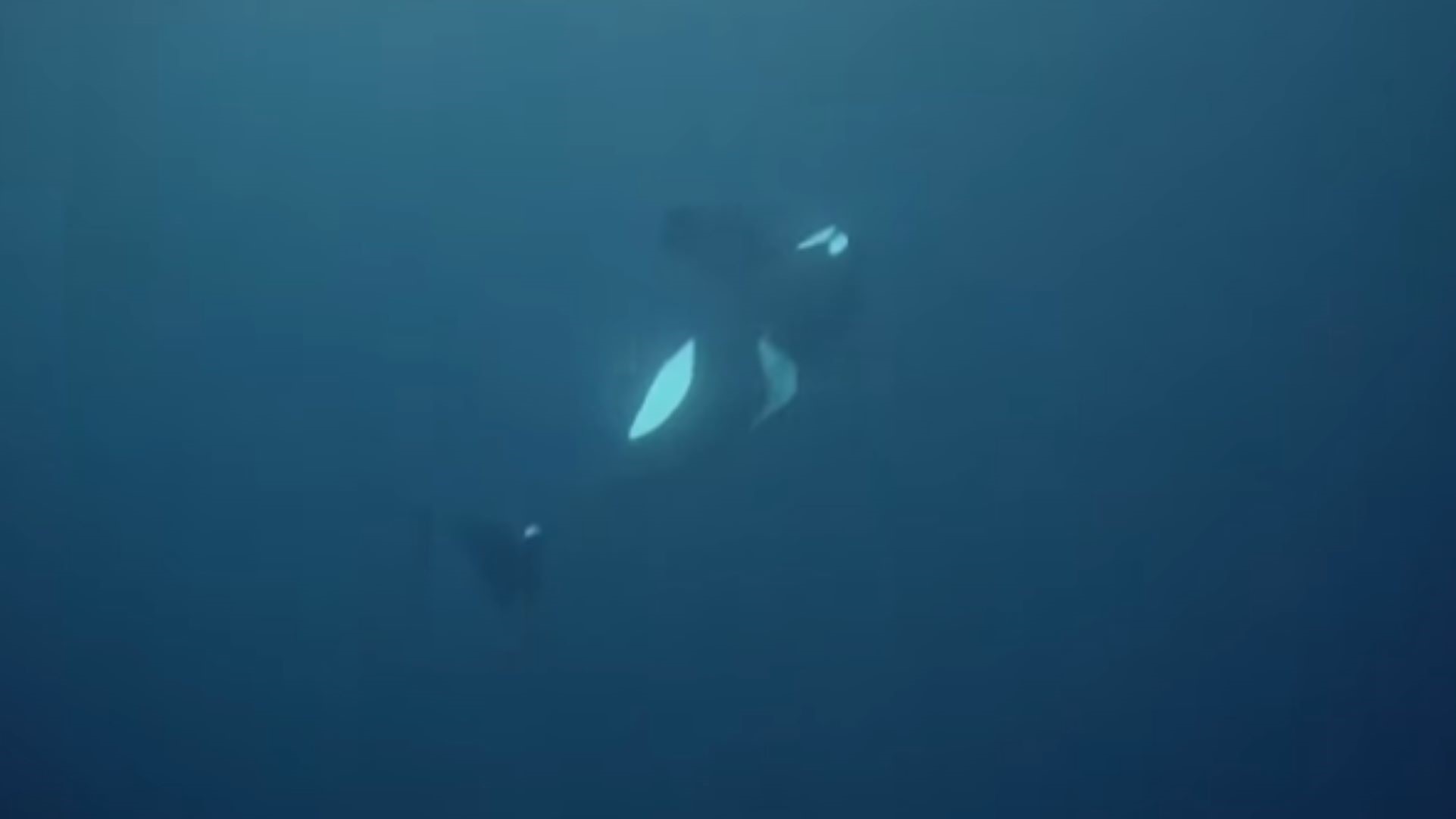Dying orca's final moments after 'desperate' effort to stay afloat captured in 1st of its kind footage
An orca's final moments may have been captured on film for the first time, after repeated attempts by two young orcas to keep the old, dying male at the surface so he could breathe.
The final moments of an adult orca's life have been recorded in what is believed to be the first footage of its kind.
Whale-watchers spotted an orca (Orcinus orca) — a roughly 35-year-old male known to researchers as Hunchy after his hunched back — behaving strangely in waters north of the island of Loppa in Norway on Nov. 6. Two younger orcas huddled close to Hunchy, seemingly holding him at the surface so he could breathe, Pierre Robert de Latour, the author of "Frère des Orques" (Glénat, 2019) who has been diving with orcas in Norway for over 20 years and was on the whale-watching expedition, told Live Science.
The attempt to keep Hunchy afloat seemed "desperate," Robert de Latour said, adding that "it was obvious that he was in trouble."
Robert de Latour got into the water and snorkeled up to the orcas to take a closer look. He noticed the old male looked skinny, and the shape of his belly suggested he hadn't eaten for a long time.
The footage shows Hunchy floating motionless just below the ocean surface after the two younger orcas left the scene. The young pair swam back and forth between Hunchy and a group of orcas further away, Robert de Latour said, repeatedly trying to "activate" the old male.
Related: Orcas sink another boat in Europe after a nearly hour-long attack
"It's the first time for me seeing something like this. I recognized him — it was very emotional — and then I saw his giant body sinking," Robert de Latour said. "It is said that orcas don't abandon individuals that are in trouble."
Get the world’s most fascinating discoveries delivered straight to your inbox.
The young orcas realized that if they left Hunchy, he would sink to his death, he added. (Orcas can stay submerged for up to 15 minutes, but they usually come to the surface to breathe every minute when resting, and every three to five minutes when traveling.)
But after 50 minutes, they seemingly gave up. "They were helping him until the very last moment," Robert de Latour said.
The footage could be the first time the death of an adult orca has been filmed in the North Atlantic — and possibly worldwide, said Filipa Samarra, a research specialist at the University of Iceland and the founder and principal investigator of the Icelandic Orca Project.
"To my knowledge, the death of an adult member of the group, and how the other [orcas] behave in that instance when an adult is dying, is something that has not been observed before," Samarra told Live Science in an email.
However, researchers have previously recorded the moments surrounding the death of a calf. "We know that orcas show very specific behaviors when calves die," Samarra said. "They have been observed numerous times carrying them, pushing them to the surface, and this can go on for many days." One incident involving orcas from the southern resident population saw a mother carrying her dead calf for over two weeks, she said.
Whether these really were Hunchy's last moments remains to be confirmed. A second boat that arrived on the scene reportedly witnessed the same struggle unfolding one or two hours later, Robert de Latour said, but the crew couldn't determine if Hunchy managed to swim back up to the surface alone or if the younger orcas hauled him up one last time.
"He's probably dead now," Robert de Latour said.
Editor's note: This article previously said the southern resident population saw a mother carrying her dead calf for over two years. It should have said two weeks. This was corrected on Thursday, November 30.

Sascha is a U.K.-based staff writer at Live Science. She holds a bachelor’s degree in biology from the University of Southampton in England and a master’s degree in science communication from Imperial College London. Her work has appeared in The Guardian and the health website Zoe. Besides writing, she enjoys playing tennis, bread-making and browsing second-hand shops for hidden gems.



